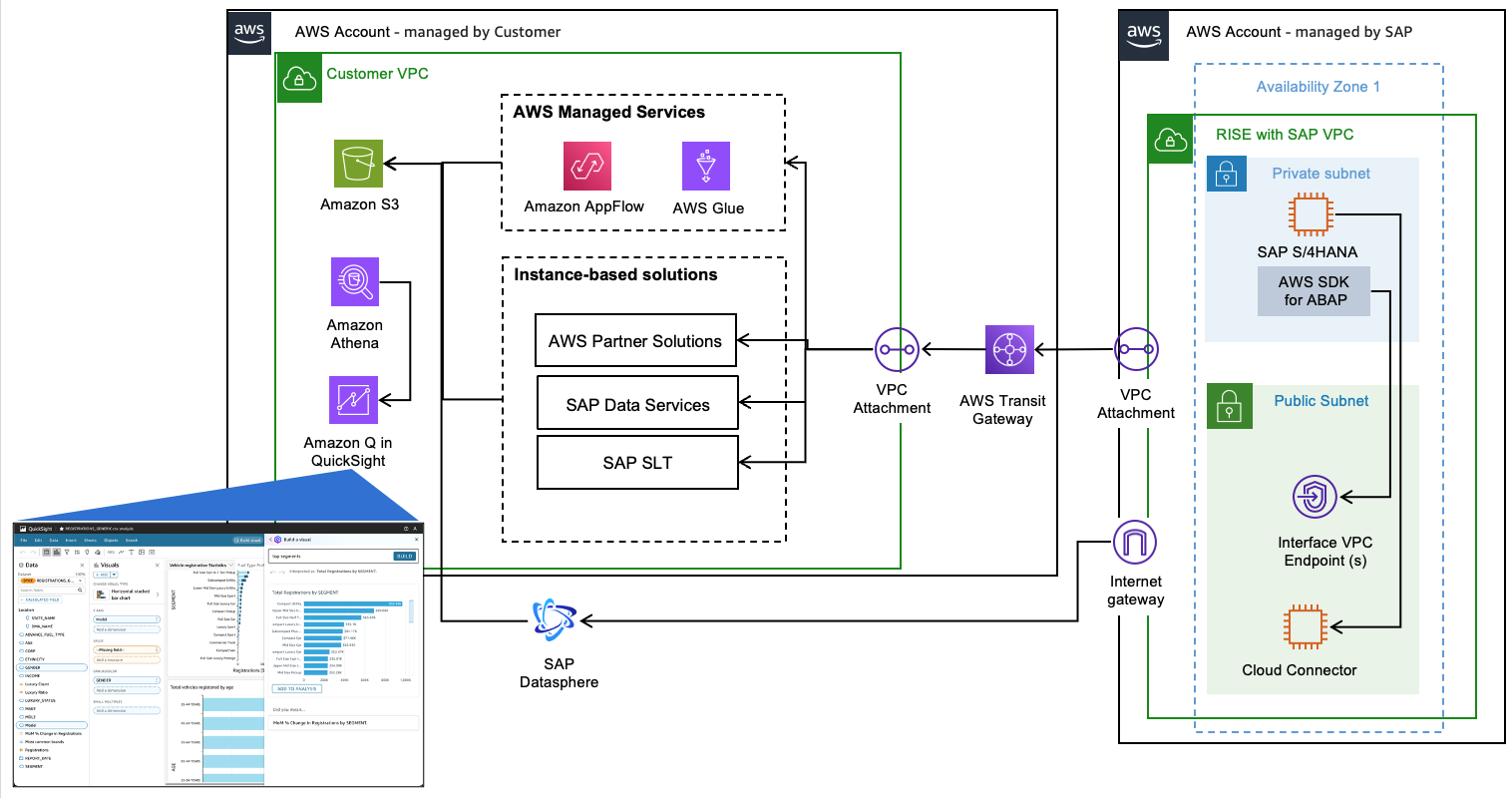Artificial Intelligence
Generative AI for SAP on AWS
Generative AI refers to intelligent systems capable of creating new content like text, images, audio, or code based on the data they have been trained on. These systems employ machine learning techniques, particularly deep learning and neural networks, to identify patterns and relationships within the training data, and then generate novel outputs that resemble the learned information.
As organizations embrace generative AI for their employees and customers, cybersecurity practitioners must rapidly assess the risks, governance, and controls associated with this evolving technology. As security leaders working with the largest, most complex customers at Amazon Web Services (AWS)
SAP and AWS have co-innovated services which help customers to combine SAP’s AI innovations and enterprise expertise with Amazon’s cutting-edge AI capabilities and technological solutions, thereby unlocking significant opportunities for business enhancement. RISE customers can accelerate their AI adoption through SAP Business Technology Platform (BTP)
SAP Data Integration and Management on AWS
Data serves as the cornerstone for the success of any generative AI solution. The quality, quantity, and diversity of data are critical factors that directly influence the performance and efficacy of AI models. We recommend reviewing our Guidance for SAP Data Integration and Management on AWS
Ways to implement Generative AI Solutions for RISE on AWS
This architectural guidance helps you build advanced AI solutions. It shows you how to effectively combine RISE with SAP and AWS's AI services to create powerful and innovative systems.
Amazon Q for Business
RISE customers can leverage Amazon Q Business
Customers who choose to break data silos by creating data warehouse or data lake solutions can use SAP and other enterprise data as source for Q Business to :
-
Create a unified search experience across systems and data thereby extracting key insights
-
Create and share lightweight applications either to select users or add them to an organization’s application library
-
Perform actions across popular business applications and platforms
-
Create and automate complex business workflows

The diagram above illustrates a design framework for Q Business based search for RISE customers. It illustrates how SAP data can be extracted utilizing AWS services and using pre-built connectors from Q Business organizations can create a unified search experience.
Solution Flow:
-
Establish connectivity with RISE environment by creating AWS Glue connection for SAP OData
-
Ingest relevant SAP data by creating ETL jobs
-
Utilize pre-built connectors to various data sources and applications to connect with Q Business. Ingest the relevant content while inheriting the existing identities, roles and permissions.
-
End users can interact in natural language to derive business insights from data across multiple applications
Amazon Quick Sight
Amazon Quick Sight
This democratization of data analysis dramatically reduces report generation time from days to hours, eliminating dependencies on specialized ABAP developers and/or analytics teams. The system’s AI-driven automation intelligently generates contextual titles, organized sections, coherent story flows, and actionable insights with specific recommendations. For RISE customers, this translates into accelerated decision-making processes, with deeper more accessible insights from their enterprise data.

The diagram illustrates a framework of Amazon Quick Sight with SAP Data.
Solution Flow:
-
SAP report to process business logic and upload data to Amazon S3
. -
With AWS SDK for SAP ABAP
, it will create an Amazon Athena query linked to the SAP report data on S3. -
Create an Quick Sight dataset and topic based on the Athena query.
-
Now using Q in Quick Sight, you can interact with the data generated by SAP reports using natural language and get insights of data, to build dashboard and generate stories.